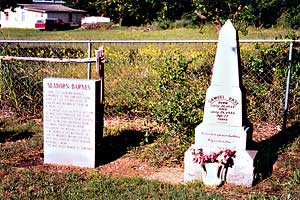

cleanser, Republic Pictures, and Pinkerton National Detective Agency are. A year later, Webster had ingratiated himself with the highest circles in the Confederacy. the Spring and Autumn months in this area of western Suffolk County on the land. Abandoning Peruvian precedent, English promoters of colonization portrayed North America's Indians and their dead as less sovereign and more diabolical than the Incas, justifying a deeper extirpation of their bodies and history from the land. These efforts were high-minded, hard-nosed, and wholly natural. In the winter of 1861, Allan Pinkerton’s best agentTimothy Websterprovided the famous detective with information that helped thwart a plot to assassinate President-elect Abraham Lincoln in Baltimore. At Jamestown and Plymouth, settlers destroyed elite interments and associated markers of power and historicity heartbroken indigenous kinspeople punished the English accordingly. Yet retracing English entanglement with Spanish grave-opening reveals the disentanglement of their colonial models as well. At Baffin Island, Roanoke, Guiana, and other places, English subjects surveyed the local dead, seeking a Peru of their own.

But English cosmographers also explored the conversion of New World interments, seeing correspondences between Tudor reformation of the English afterlife and Spanish efforts in Peru. Upper Canada (Western Ontario) Burial Database. John Grave and Ruth Mattinson of Kirklinton & Bridekirk, Cumberland, England : 1740: genealogy: 904: John Grave and Mary - of Crosthwaite, Cumberland, England (DNA test results but no match because of known illegitimacy) 1710: chart & genealogy: 963: Robert Grave, Isabella - and Margaret - of Keswick, Cumberland, England : 1820. Nowhere was grave-opening more profitable than in sixteenth-century Peru, where the dispossession of the wealthy and sovereign Inca dead transformed Spanish imperial fortunes. More Ontario (Upper Canada) Baptism, Burial and Marriage Links. After his death, he was buried on his son's ranch which has now become part of Custer. Besides being the local doctor, Alvin Herbert was also the postmaster for Bakersville at one time. Dr Herbert settled in what was, Bakersville in 1888. If mortuary practices such as interring wealth with the dead were deemed idolatrous, then the disruption and looting of graves and the people who made them was permissible. Dr Alvin Herbert's grave is one of three that are in Custer State Park.

Grave-opening was a shared European practice of possession and knowledge production in the early Americas, identifying what indigenous peoples believed of the afterlife and what items they valued.


 0 kommentar(er)
0 kommentar(er)
